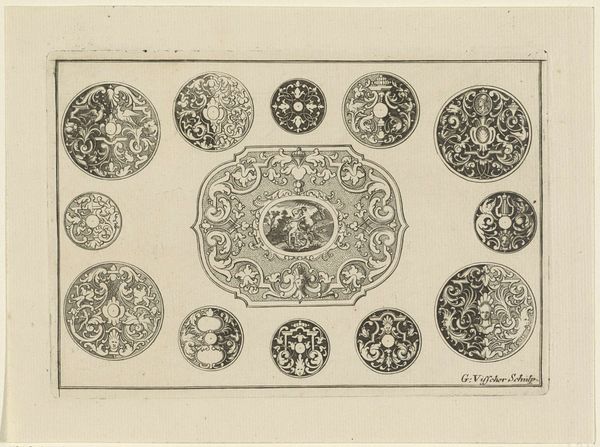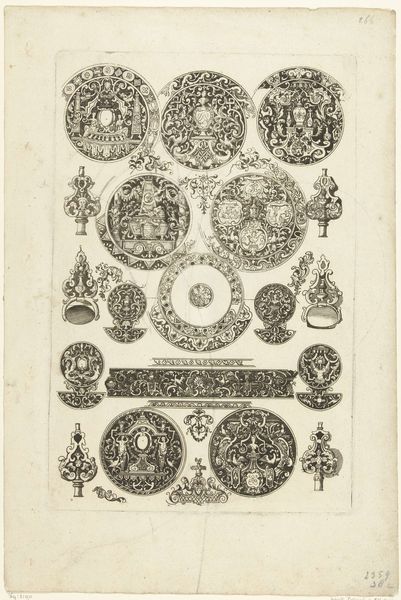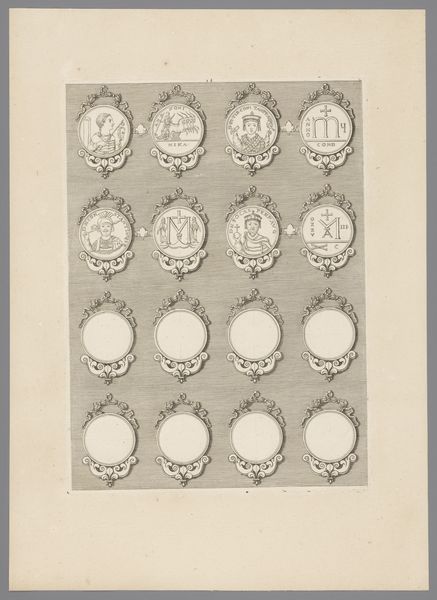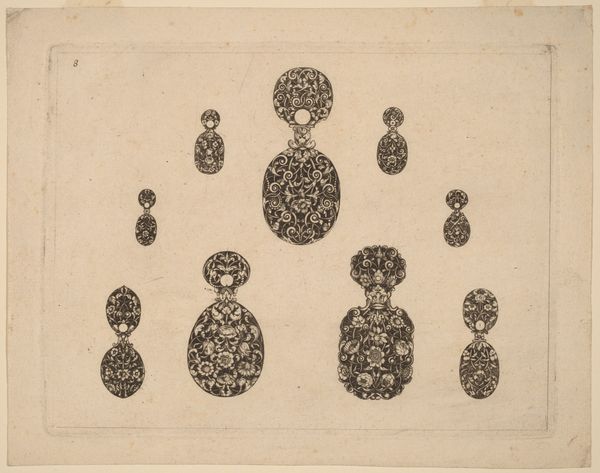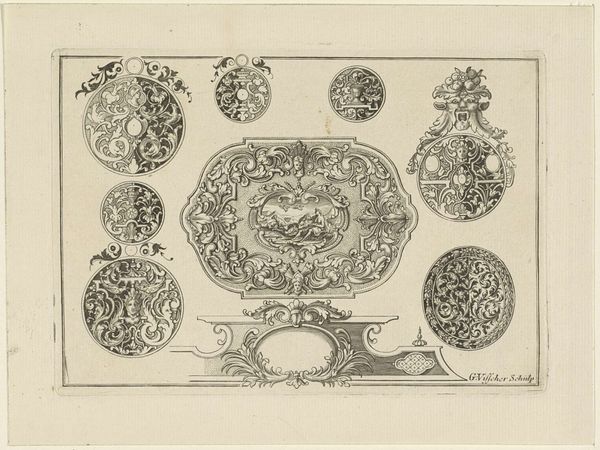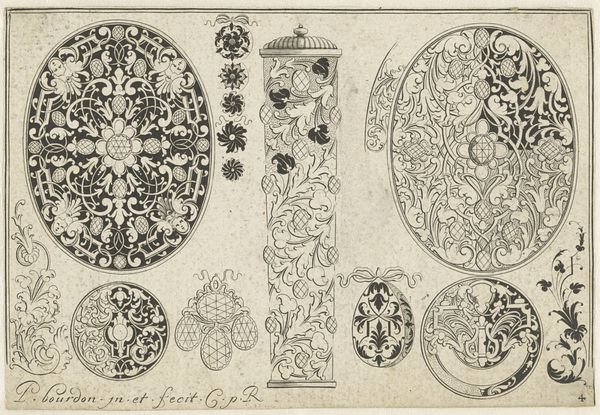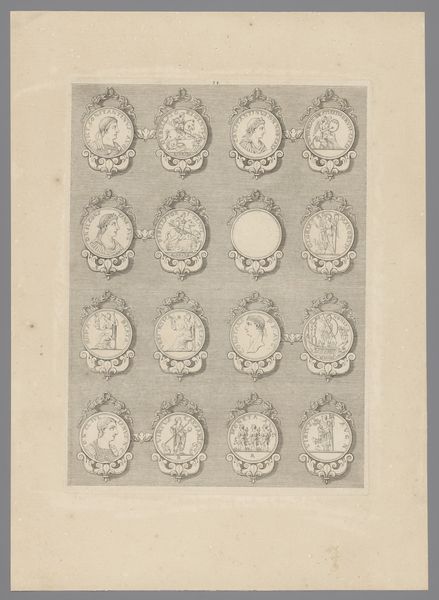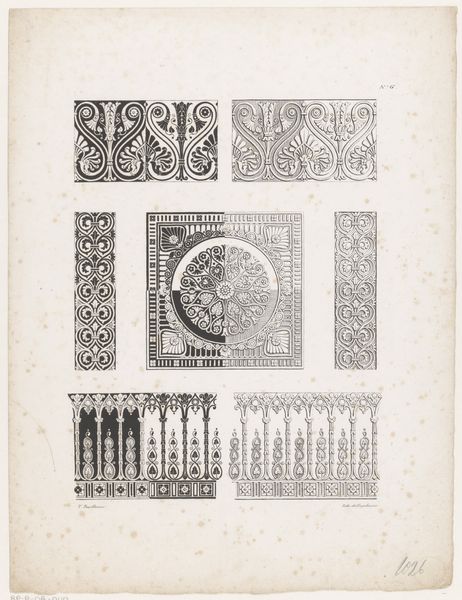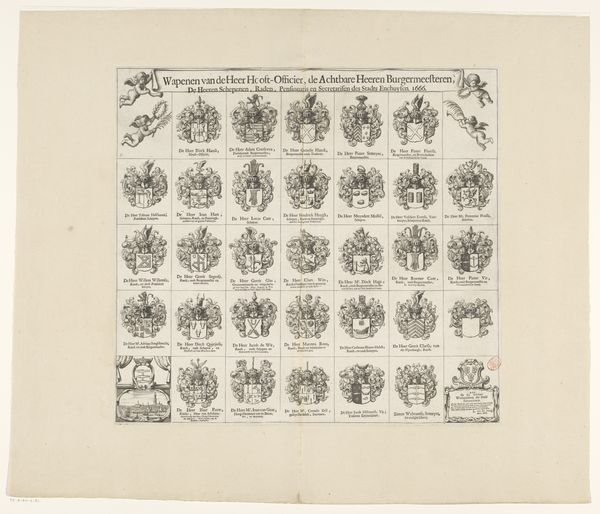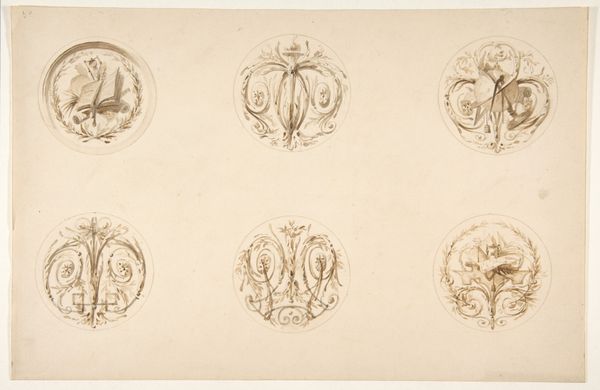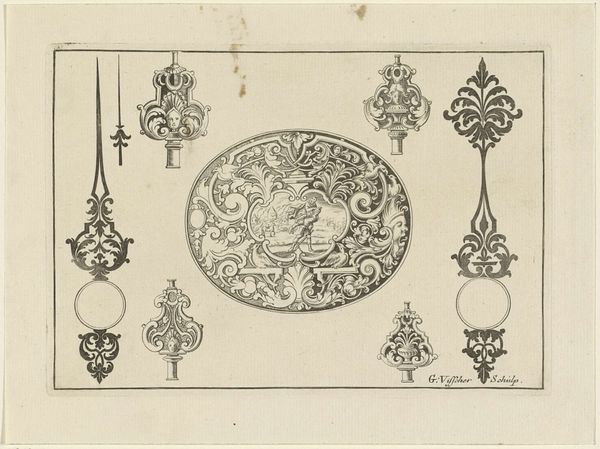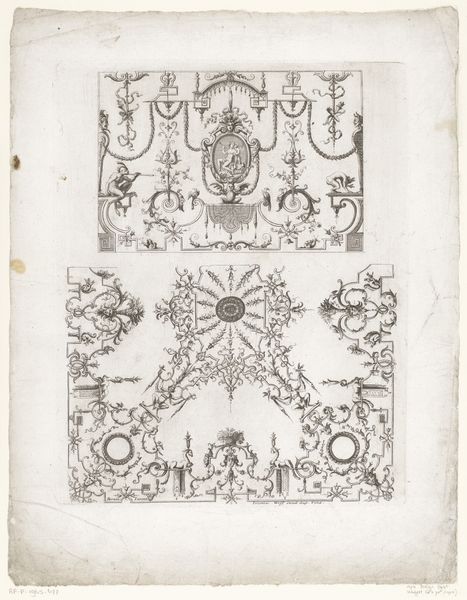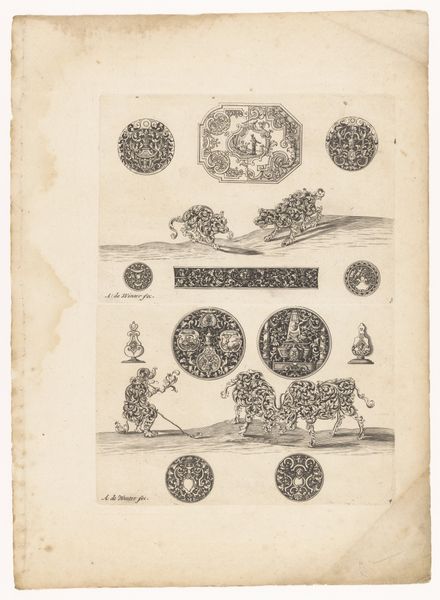
Dimensions: height 163 mm, width 232 mm
Copyright: Rijks Museum: Open Domain
Editor: Here we have "Brooches, Buckles, Earrings, and Rings" by Jean Guien, created in 1762. It's an engraving and drawing print held at the Rijksmuseum. It seems to depict various jewelry designs. What draws my eye is the overall symmetry of the piece, but I wonder if that's all there is. What do you see? Curator: Observe how Guien meticulously arranges the jewelry in a grid-like format. Consider the interplay between positive and negative space. The precision of the lines, the varying densities of shading—they all contribute to the work’s inherent visual interest. How do these elements work together to guide the viewer's gaze, would you say? Editor: Well, the symmetry certainly creates balance, and the varying shades bring some areas into focus more than others. It leads the eye from top to bottom. Curator: Precisely. It's also crucial to consider the concept of ornamentation itself. Does the density and arrangement of embellishment affect the piece’s formal structure? How do these patterns and structures, which may seem superfluous on first inspection, contribute to the overall unity and composition? Editor: So, you're suggesting the decorations are more than just surface-level, and affect the artwork's visual architecture. Curator: Precisely. Furthermore, observe how each item, though distinct, adheres to the Baroque aesthetic of intricacy and ornamentation. The arrangement creates visual relationships. The artist manipulates positive and negative space to define the overall aesthetic experience. In effect, Guien gives an opportunity to investigate the structure and its relationship to style through close formal analysis. Editor: That really makes me look at the piece in a new light! Thanks for highlighting how all the elements contribute to the art’s design beyond the jewels themselves. Curator: Indeed, by deconstructing its components and compositional aspects we gain an expanded comprehension and appreciation of this decorative art print.
Comments
rijksmuseum about 2 years ago
⋮
The name of this French engraver working in London is known only from this series of designs, which was first published in 1710. The rapidly changing fashions made it no longer worthwhile for designers to publish their jewellery designs. Sources include complaints by goldsmiths that they depended chiefly on the size of the gemstones their clients brought them.
Join the conversation
Join millions of artists and users on Artera today and experience the ultimate creative platform.

